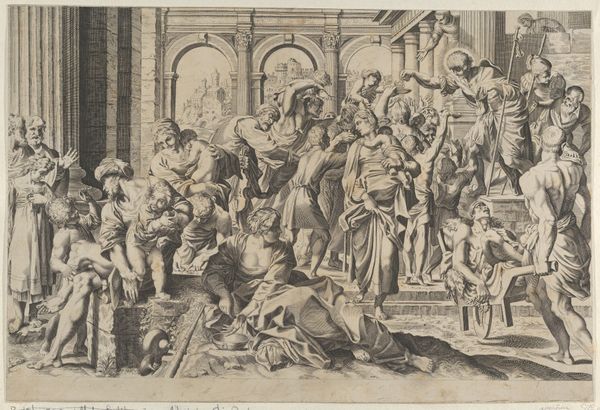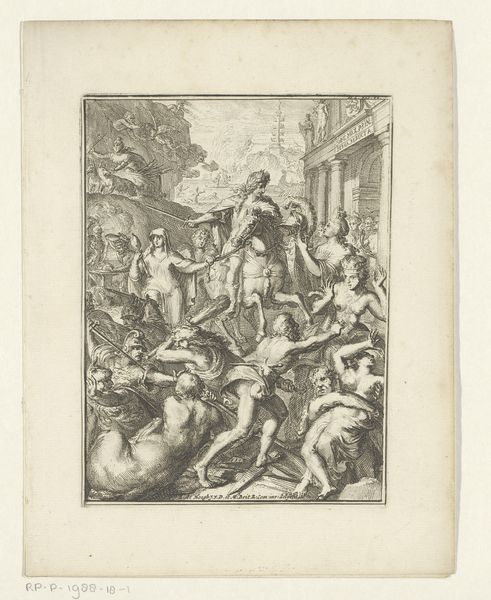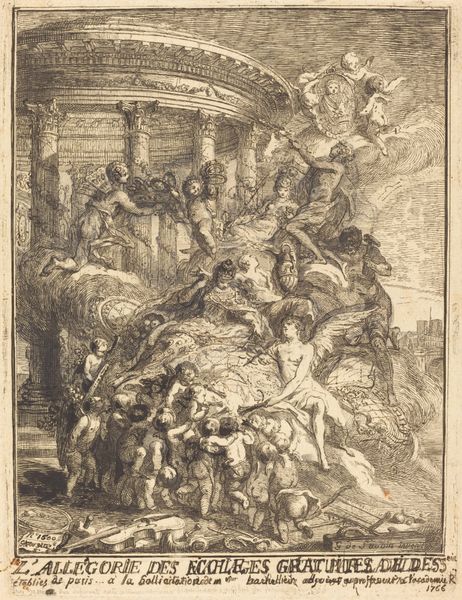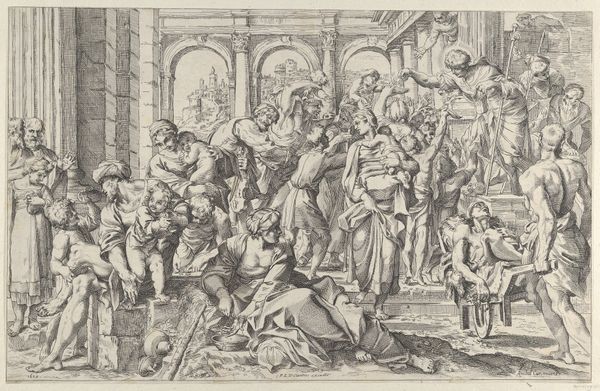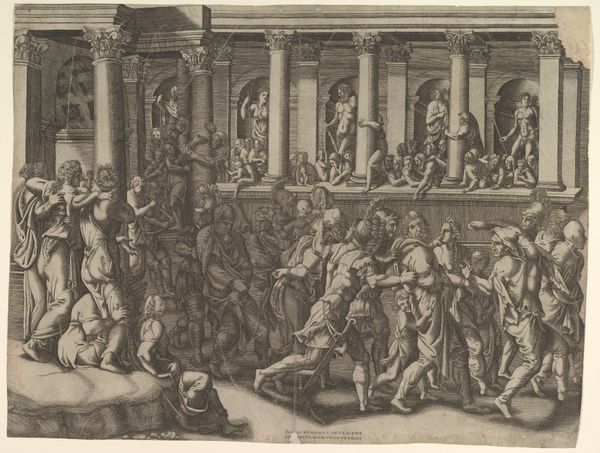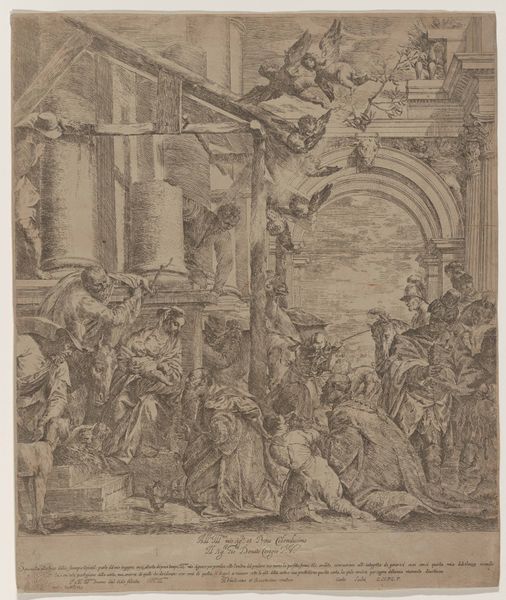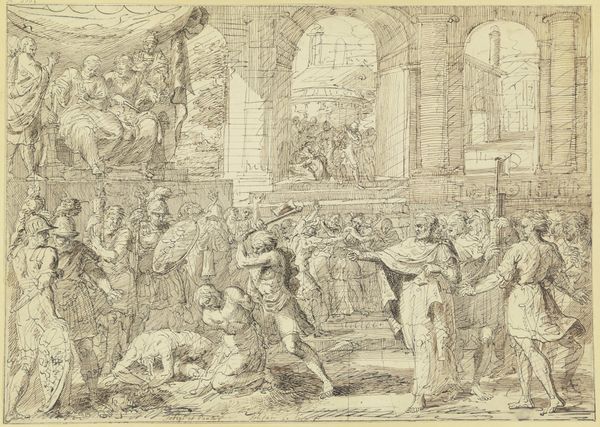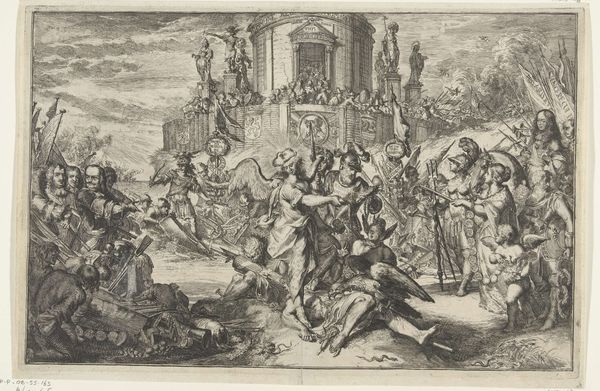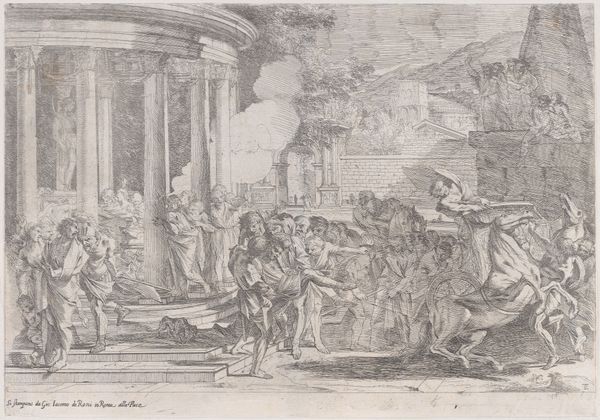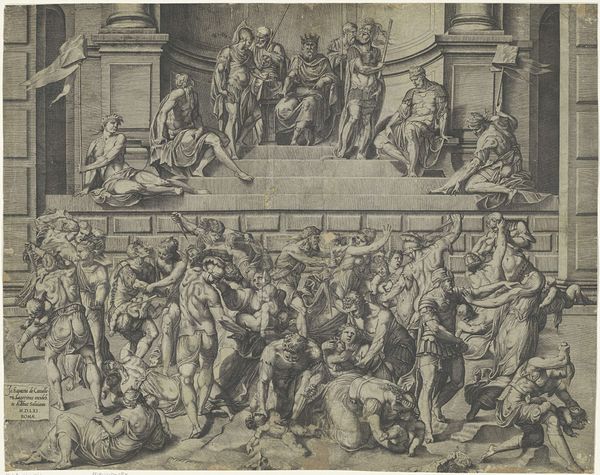
print, engraving
#
narrative-art
# print
#
figuration
#
history-painting
#
italian-renaissance
#
engraving
Dimensions: height 522 mm, width 414 mm
Copyright: Rijks Museum: Open Domain
Curator: Looking at this print, I am immediately struck by the brutal scene rendered in such intricate detail, creating an almost unbearable tension. Editor: Indeed. This is Domenico Campagnola’s “Massacre of the Innocents (right part),” an engraving from 1517, now residing here at the Rijksmuseum. The drama unfolding before us, while framed within Italian Renaissance aesthetics, speaks volumes about political power, patriarchal violence, and vulnerability. Curator: Absolutely. And observe the architectural framework surrounding the figures; this is not a haphazard composition. The columned buildings and detailed bas-relief echo Roman imperial power. It speaks to a world where structure and civilization serve as backdrop to senseless cruelty. Herod's decree is being enacted. Editor: That backdrop also normalizes what we’re seeing. The horror becomes mundane within structures of authority. The print visualizes a crisis of governance, asking viewers to confront what happens when those structures fail to protect their most vulnerable. Who does it serve to kill children? Curator: I see this as more than merely about government failure. Notice how the figures are styled, classicizing musculature, but violently contorted—a disruption of harmony. Consider, too, that the print medium itself aided in the wide dissemination of these violent iconographies. Editor: Agreed. But also let’s recognize that even depictions of suffering, when reproduced and circulated, shape how we engage with trauma. Are we meant to empathize? Or simply consume the spectacle? The history of its collection and exhibition plays into that dynamic too. How have different eras perceived its significance, its morality? Curator: The piece echoes biblical history, certainly. The scene is immediately recognizable from well known iconographic versions, its moral function would have originally provided comfort in reinforcing belief in salvation, yet by rendering the figures with a classicist bent, Campagnola heightens the visceral terror, reminding us of worldly political conflicts and decisions. The symbols, if we unpack them, tie sacred narratives with secular power. Editor: In unpacking it all, maybe we recognize how images shape our memory of atrocities. Perhaps it prompts us to see the recurring patterns in representations of violence and how easily we grow numb to them. This echoes through so much violence towards innocent, stateless people throughout history. Curator: Reflecting on all that we've discussed makes this seem not so much an isolated incident, but instead the recurrence of an iconographic representation and political reality across eras, an archetype in visual history. Editor: Yes, precisely.
Comments
No comments
Be the first to comment and join the conversation on the ultimate creative platform.
